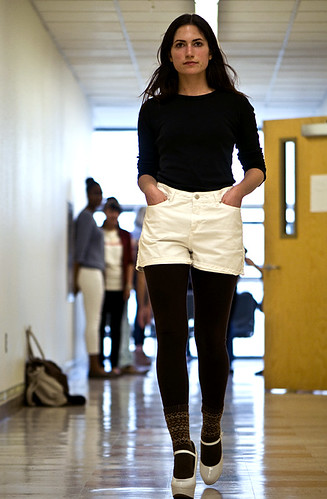What separates man from animals? Some would say it’s opposable thumbs, others the use of tools, while a more select group would say that it’s the ability to do the perfect non-literal cat walk.

The Fashion Network Association, based out of SF State, is preparing its fall showcase, set for Dec. 9, which will highlight specific looks that can be seen in the final show in the spring semester. The FNA is a group of current students and alumni that work to learn about, plan, design and produce fashion events and publications.
Stephanie Starr, president of the FNA, said one of the most distinct things about the shows is that they are very campus-centric. Using only SF State designers and models, Starr hopes the FNA can bring San Francisco’s fashion identity to light.
“We want to showcase our school and what we are all about,” Starr said. “It showcases our students because a lot of people don’t know that a fashion program like this even exists here.”
FNA’s faculty adviser, Dr. Connie Ulasewicz, an associate professor in fashion merchandising, said that the FNA is necessary because clothes have a deeper meaning than just cloth.
“What people should know is that we all communicate through clothes and what we put on our bodies,” Ulasewicz said. “This group is people who like to take that idea and play with it and explore fashion.”
Last week the FNA invited potential models, some with no training at all, to fill out a form, get photographed, measured and to practice their model walk. In some ways it was more model training than model selection, which is set to happen this week.
There were no unfair expectations on the models, as they were allowed to mess up and try again with constructive notes from Starr and other organizers. Starr said that designers and models came from all sorts of different majors from English to biology, and she knew not all of them would be trained professionals.
“Our models are different because nobody in San Francisco is normal,” Starr said. “None of the models are going to look alike, especially when you hit a college campus because they are just people.”
Ulasewicz said that the universality of clothing made a lot of traditional fashion choices seem ridiculous.
“Clothing is something we all wear, everyone participates,” Ulasewicz said. “The idea of who is a model is false because we are all models, and you don’t have to be an anorexic wafer to be one because these are real people.”
Giovanni Vito, an 18-year-old freshman and Japanese major, embodies the FNA spirit. Vito, with his own style and charm, does not have the traditional model look or background, but quickly began to adapt.
Vito said he hadn’t had much interest in clothing until his sophomore year of high school, and since then the idea of wearing clothes suited for him caught hold.
“It sounded fun and seemed like a good opportunity,” Vito said. “I hope to get more insight into the world of modeling and help build myself some more self-confidence.”
The theme for the show has been labeled “Impressions,” and Starr says this refers to the subjectivity of fashion. The audience can look at a piece and get a million different things from it, and everyone’s opinion on a design is different.







